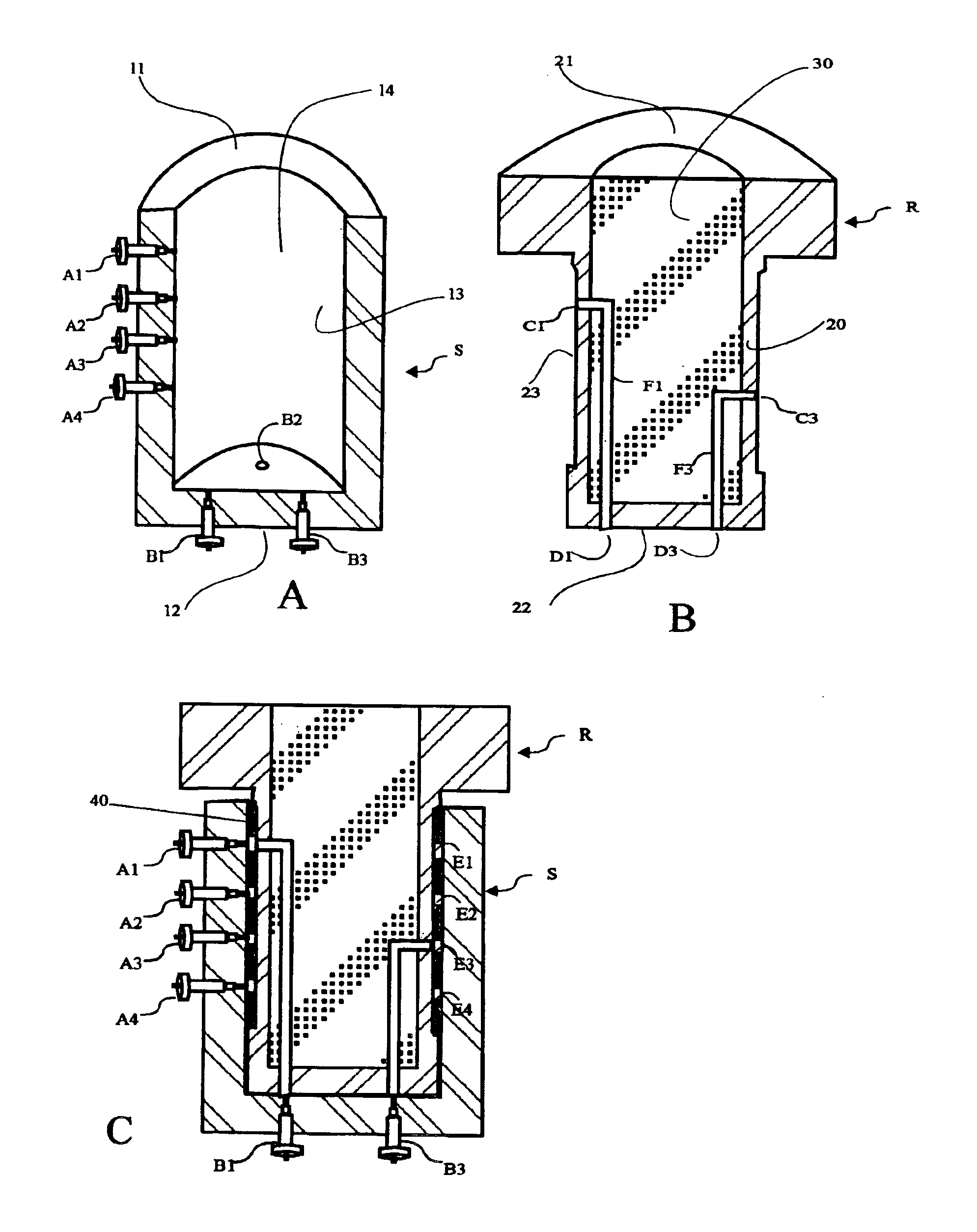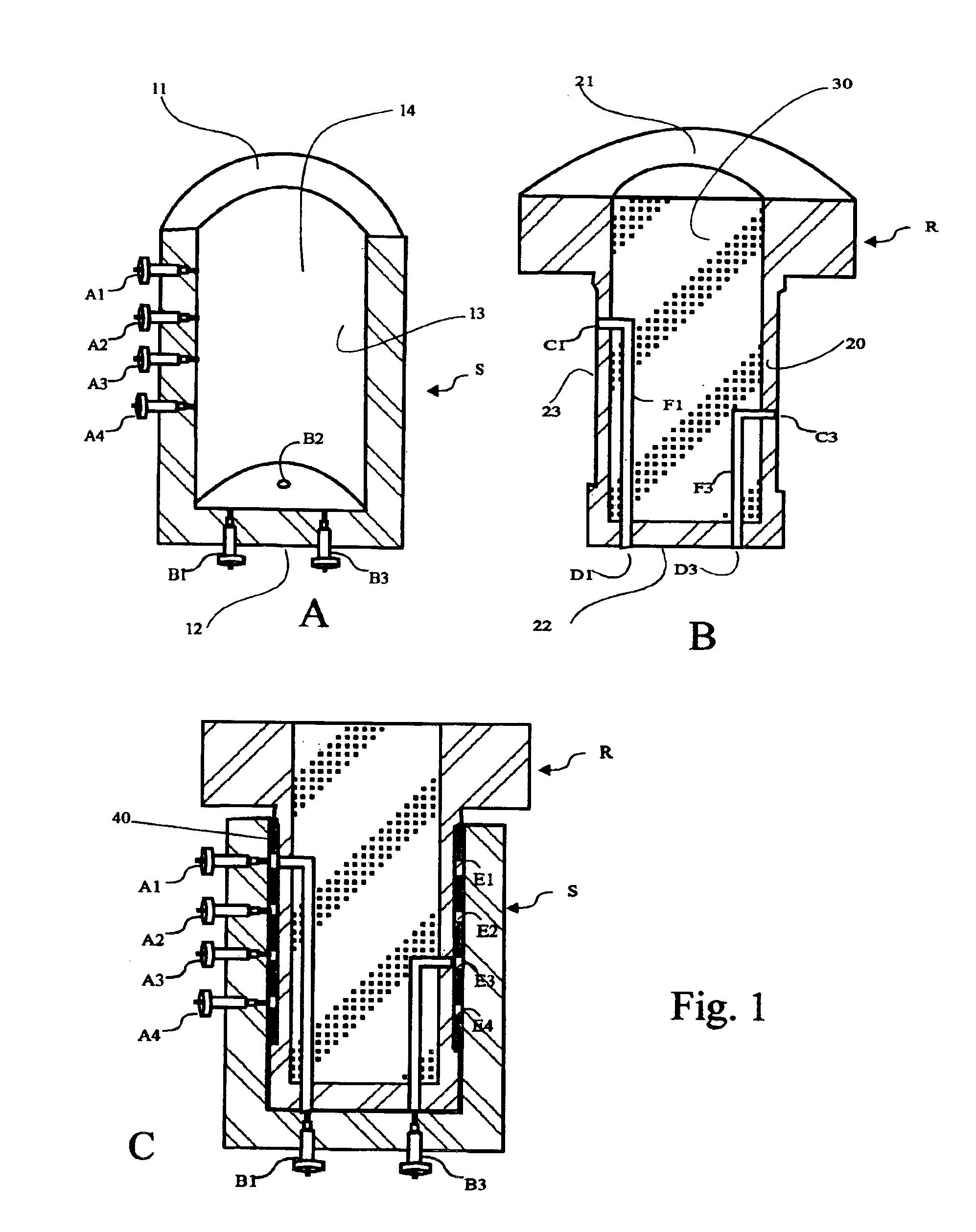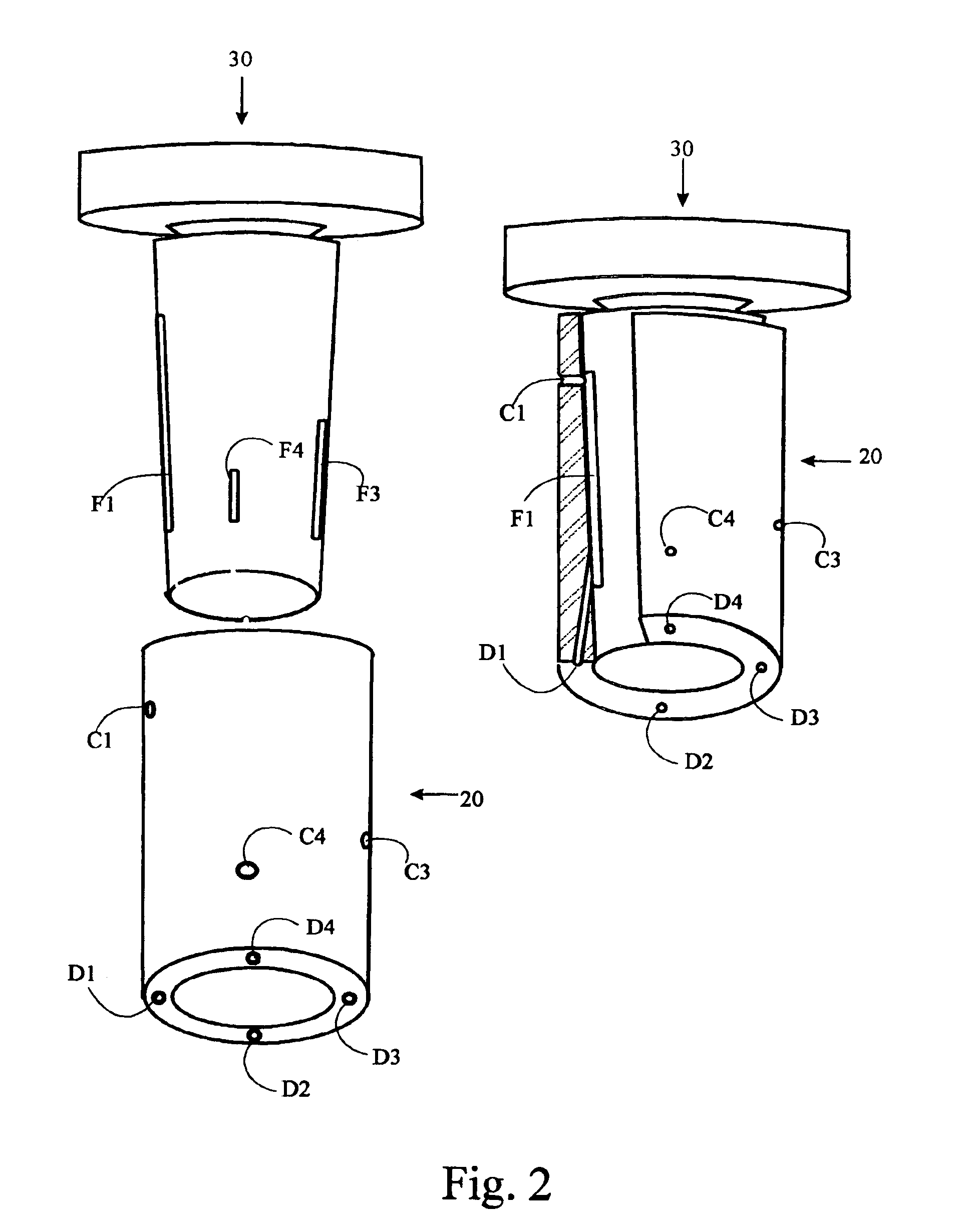Flow-diverting rotary valves of multiple paths
a rotary valve and flow-diverting technology, applied in the field of rotary valves, can solve the problems of large-sized valves that are inconvenient, limited by the prior art, and complex operation, and achieve the effects of reducing volume differences among the circular grooves, reducing fluid pressure, and reducing volume differences
- Summary
- Abstract
- Description
- Claims
- Application Information
AI Technical Summary
Benefits of technology
Problems solved by technology
Method used
Image
Examples
Embodiment Construction
[0018]For exemplary purpose, all Figures for the preferred embodiments have four flow paths for diverting four fluid streams. It should be realized that the valve of the present invention are able to simultaneously divert more fluid streams and the number of flow paths of the valve is not a limit of the present invention.
[0019]FIG. 1 shows one embodiment of the present invention. The embodiment comprises a stator S and a rotor R that is positioned within stator S. Stator S has a top end 11, a bottom end 12, a lateral exterior surface 13, a circular cavity 14 with an lateral interior surface 14a, and a plurality of external ports extending from lateral exterior surface 13 to the lateral interior surface 14a. Said ports are grouped into group A of 4 ports and group B of 4 ports. The ports of group A are designated as port A1 to A4 and are spaced apart longitudinally from said top end 11. Ports of group B are designated as ports B1 to B4, are located approximate to the bottom end 12 on...
PUM
 Login to View More
Login to View More Abstract
Description
Claims
Application Information
 Login to View More
Login to View More - R&D
- Intellectual Property
- Life Sciences
- Materials
- Tech Scout
- Unparalleled Data Quality
- Higher Quality Content
- 60% Fewer Hallucinations
Browse by: Latest US Patents, China's latest patents, Technical Efficacy Thesaurus, Application Domain, Technology Topic, Popular Technical Reports.
© 2025 PatSnap. All rights reserved.Legal|Privacy policy|Modern Slavery Act Transparency Statement|Sitemap|About US| Contact US: help@patsnap.com



